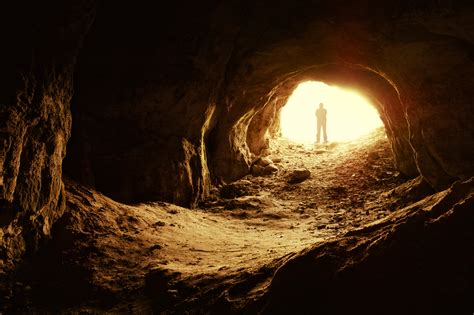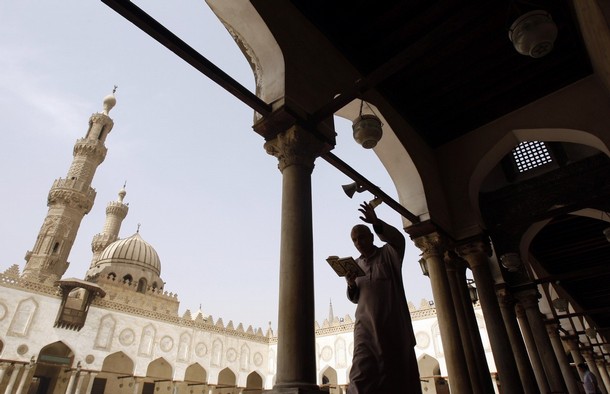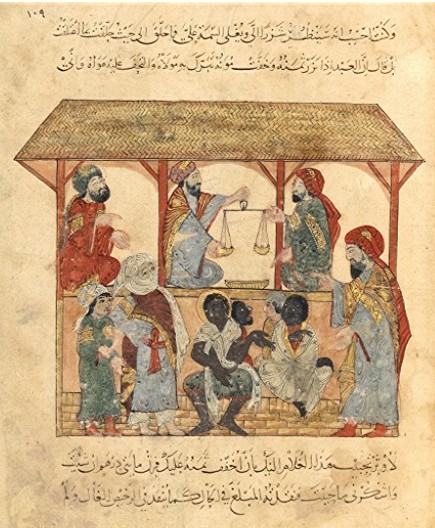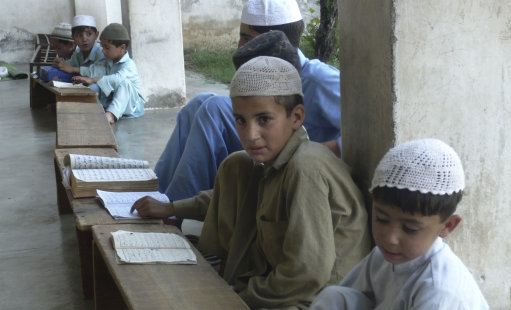
In the immediate aftermath of the 9/11 attacks against America carried out by Al Qaeda many American experts, decision-making circles and centres of research stressed the need to review 'educational programs' in the Middle East which they saw as one of the principal drivers of the human bomb factories that blew up the Twin Trade Towers and destroyed part of the Pentagon.
AT THE TIME I had prepared a study on further education for the University of Denver, the basic premise of which was that there were other more important reasons playing a decisive role in the ‘industry of death’ promoted by the violent trends. The study investigated the education syllabuses in religious institutions affiliated to the University of Al Azhar in Cairo, on the grounds that the latest manifestation of political Islam’s violent currents had clearly crystallised in Egypt before being transferred to other Arab Muslim countries.
But from my study of the issue I came to the conclusion that there is something more dangerous which the religious doctrines manufacture and sanctify. This is the turning out of hundreds of thousands of pupils suffering from a state of ‘chronological alienation,’ in that these are living in the 21st-century while their brains wander up and down the corridors of the 11th century at best.
What astounded my American supervisors the most was the sheer antiquity of the books in circulation in the primary and secondary education stages. Just to take one example, one of the set texts of Shafiʽī law is Al-Iqnāʽ fī Hall Alfāz Abī Shujāʽ by Imam al-Sharbīnī, (ob. 1569 AD), which is itself a commentary on the text of Al-Ghāya wal-Taqrīb by Abū Shujāʽ al-Isfahānī (ob 1197 AD).
Similarly one of the set texts of Hanbalī law is the work Al-Rawd al-Murabbaʽ bi-Sharh Zād al-Mustanqaʽ by Shaykh Mansūr al-Bahūtī (ob 1641 AD) which is a commentary on the text of Zād al-Mustanqaʽ fī Ikhtisār al-Muqniʽ by Shaykh Sharaf al-Dīn Abī al-Najā Mūsā al-Hanbalī (ob 1553 AD). It is clear that the first text was written more than eight and a half centuries ago, while the second work is five hundred years old.
There is something more dangerous which the religious doctrines manufacture and sanctify
While these legal texts cover a number of themes and rulings related to many issues encompassing the daily life of the individual Muslim, and regulate his conduct towards other people and society, and determine the nature of his dealings in daily mundane affairs, it represents an important source – in fact a highly important one – for understanding the formation of the Muslim mindset and its comprehensive viewpoints and conceptions on life. Hence the crucial importance of the role these books and doctrines play in the way they shackle the Muslim mindset in the ‘prisons’ of the past, in its problems, issues and standards of behaviour. Consequently it brings up generations and armies of youth who seek solutions for the problems of their present life in experiences gleaned from ‘the past’, in that ‘history’ is thus transformed into a course of action to be referred back to, rather than comprising a launching pad from which one embarks to embrace the horizons of the future.
Chronological alienation is the most dangerous malady afflicting the Islamic nation today. One example of this alienation is the discussion contained in the Shafiʽī legal school book Taqrīb Fath al-Qarīb which is set text for class three of the preparatory grade. In discussing the term istibrā’ al-ama (‘dispensing with a slave-girl’) it states the following:
Istibrā’ (‘Ridding’): this is where the female slave is made to wait aside for a trial period due to her secreting fluid, so as to decide whether she is free of pregnancy. The causes of this are one of the following: when her husband passes away, or has manumitted her or wishes to marry her off after having had sexual intercourse with her, in which case he must free himself of her for a period prior to marrying her off for fear of any seminal fluids subsequently mingling.
The above discussion is supposed to teach pupils how to live in the 21st century in a society where slavery no longer exists and where it has become a crime punishable by law. So what is the point of implanting these things in the minds of pupils?
The alienation is not confined to the theme of slavery but also embraces such lamentable matters as the following example contained in the work Al-Iqnāʽ fī Hall Alfāz Abī Shujāʽ taught to pupils in the first year of secondary school. This concerns the conditions that allow for shortening the time required to spend on communal prayer, one of which being the length of distance travelled, for which it states that it should not be less than ‘48 miles.’ It then goes on to explain to the pupils how to measure this distance:
A mile is made up of 4,000 paces, and a pace consists of three feet, two feet equalling a cubit, the cubit measuring 24 outstretched fingers, a finger being six average-length hairs, a hair six hairs of a bardhūn.
Chronological alienation is the most dangerous malady afflicting the Islamic nation today
The pupil is then referred to the marginalia of the page for the definition of a bardhūn, where it states quite blithely that it is ‘a type of non-Arabian horse’! Where is a student going to get hold of the hairs of a horse in order to measure the distance? If only it were a matter of the hairs of any horse – but no – it has to be a non-Arabian bardhūn horse. Just imagine! Why should a student in this day and age be forced to measure distances with a finger and a hair? Where are the modern gauges of distance which the student could embrace and easily understand?
One of the astounding mythical assumptions the book demonstrates on the themes ‘ritual impurity’ and ‘menstruation’ is the following:
He who inserts one of his phalluses becomes ritually impure if he urinates only through that one
and:
Had the woman been created with two vaginas, that which issues from either of them would still constitute menses.
Words simply fail me here. As for the section on breast-feeding, the book has this to say:
If two children are suckled by a ewe and their sibling relationship is not confirmed then they may marry with each other; the same goes for a she-fairy, if she suckles them on the understanding of the impermissibility of their subsequent marrying, this would be more acceptable.
Even if we were of the conviction that a ‘ewe’ could suckle human infants – which is an impossibility – how could we be convinced that it were possible for a she-fairy to suckle a human? In the second part of the same book, a section set for the pupils of the second class of secondary school, discussion turns to the issue of slavery, and here it says that among the things that maybe pledged as security, but not sold, is
the servant girl who has a child under the age of full legal responsibility, in which case one of the two may not be singled out for sale in separation from the other, but they may both be pledged as security for a debt. Should the necessity arise they may both be sold, in which case the one given as a security may be either the nurseling or the one nursing.
Is it reasonable that students in the 21st-century should be taught by our educational syllabuses that they can mortgage a human being or sell him or her as if they were an article of property or a car or any other type of goods?
One of the things that the book regales us with is a discussion on the sale of books:
It is not permitted to sell books of the infidels or books on astrology, sorcery or philosophy.
The syllabus has placed philosophy on the same level as books on sorcery. Can there be a more explicit war against the intellect than this? What can we expect the results to be of such a syllabus which despises philosophy – the foundation of the arts, literature and the sciences (including the experimental sciences) – that have brought about a huge revolution in knowledge both in our time and the eras preceding it?
How are we supposed to enter the scientific age locked up in the caves of the past?
As for the book Al-Rawd al-Murabbaʽ bi-Sharh Zād al-Mustanqaʽ this regales us with some amazing gems of brilliance such as the following question:
We have been commanded to prostrate ourselves in prayer resting upon seven bones: the forehead, two hands, two knees and the extremities of our two feet. What should one who has been created with two heads, four hands and four feet do?
This is a book that, in speaking of a woman’s pregnancy, states that “the maximum period of gestation is four years”, a discussion which both contradicts and offends against the intellect, a myth that should not be taught to pupils in a scientific age. For with all the developments in medical science, and the systematic follow-up studies of pregnancies, it has become entirely possible to ascertain with precision the period of pregnancy. In this modern era gynaecologists and paediatricians have observed millions of cases and have failed to record a single instance of a natural pregnancy lasting for a period of one year, let alone several years.
When I was compiling my study the tally of Azharī institutions numbered 8,772, amounting to 46,633 classes accounting for a total of 1,772,800 students. Naturally this figure refers only to educational institutions in Egypt. How many institutions and academies in the Islamic world are teaching these courses? What then is the tally of youths in the Arab and Islamic worlds who are embarking on the road to knowledge on the basis of books like these or of an un-systemised ‘informal’ education?
The picture that the Islamic world is living in now is an extremely gloomy one. These generations now falling victim to syllabuses that perpetuate chronological alienation are the same generations that are being relied upon to galvanise the Nation to catch up with the age of science.
Only societies founded upon the mastering of knowledge and participation in creating it, on deepening it and developing its various branches, are the ones qualified to walk in the footsteps of progress and civilisation, given that the impact of knowledge on economic, social and cultural life and upon the way people live is now immense as a result of the revolution in science and technology. This revolution in science and technology, which has changed the face of the world, was basically founded upon modern educational methodologies particularly in the fields of electronics, nuclear power, physics, biology and space exploration. Figures show that during the last two decades mankind has accumulated a level of knowledge unattained over millennia.
Many nations in the Third World have attempted to enter upon the path of knowledge by developing educational programs that are in line with the requirements of the digital age, starting from primary instruction and extending to the level of university education. Witness how India today has sent 200,000 IT programmers in one year to the United States for work, in addition to those it has sent to Europe. Witness how in less than four decades South Korea has achieved an economic and technological miracle thanks to an advanced and effective educational program that focuses upon the acquisition of science and technical skill.

Suggested Reading
How are we supposed to enter the scientific age whilst we are still locked up in the caves of the past, while our educational programs feed t
he minds of our students with such embarrassing and sterile information, at a time when the world is living through a period of ‘intelligent data’ or ‘business intelligence’ and looks towards a phase of ‘massive intelligence’ or ‘big data’?
Educational curricula in general, and religious education (both formal and informal) in particular, constitute a major fundamental obstacle to the advancement of the Arab Muslim nations and to their attempts to catch up with the age of science. If this continues to be the case ‘chronological alienation’ can only deepen as every new day passes, and these countries will continue to lag behind other nations, and continue to suffer from poverty, illiteracy wars, economic dependency and other ills.



